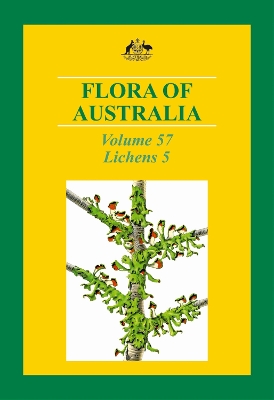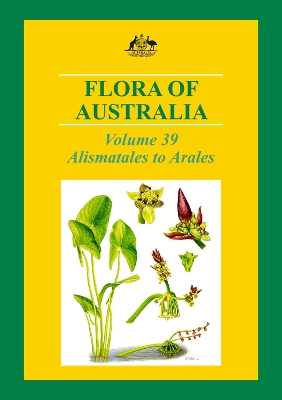Flora of Australia
3 total works
Vol 28
This volume deals with four families of the order of Gentianales: Loganiaceae; Gentianaceae; Apocynaceae; and Asclepiadaceae. It provides descriptions of 62 genera and 326 species in these families. Most are tropical or subtropical and though they have scented flowers, and many have tropical fruit and foliage. Asclepiadaceae are perhaps best known for their very specialized floral structure, and many, including "Hoya" and "Dischidia" are grown as horticultural subjects.
Volume 57 is the fifth volume of the Flora of Australia which documents the lichens. Here, we emphasise several speciose and ecologically significant families that colonise the bark of trees and shrubs in monsoon vine forest and in coastal and montane rainforest across northern Australia, viz. Graphidaceae, Phyllopsoraceae, Pyrenulaceae, Thelotremataceae and Trypetheliaceae. In addition, treatments are provided for prominent, mainly tropical and subtropical genera such as Dirinaria, Letrouitia, Pyxine and Strigula, as well as the more widely distributed Buellia s. str., Lepraria, Ramboldia and Tephromela. In contrast, the volume also includes lichens that are primarily associated with cool-temperate and montane habitats in south-eastern Australia, for example Nephroma, Peltigera, Thelocarpon and Umbilicaria. Complete or partial accounts of 21 families are provided in Volume 57, including 78 genera and 654 species and infra-specific taxa. One genus (Schizotrema, Thelotremataceae) and 27 species are described as new to science, and 35 new combinations are made. This work brings to 1822 the number of Australian lichen species and infra-specific taxa treated in the five volumes published.
Volume 39 of the Flora of Australia describes 17 families of monocots in 76 genera and 256 species. Most of the families are aquatic, and include the sea-grasses, pond weeds, and some major agricultural weed species. Four families are entirely or mostly terrestrial. The aquatic families are all small in number of species, and two, Juncaginaceae and Posidoniaceae, have their greatest diversity in Australia. Lemnaceae contains the world’s smallest and most reduced flowering plants, some as tiny as 1 mm long. Of the terrestrial families, all are predominantly tropical, with their greatest diversity outside Australia. Arecaceae (palms) and Pandanaceae are often large trees, and include species of economic importance as food and oil crops, fibre, timber and other construction materials, as well as many horticultural species. Araceae are mostly climbers but also arborescent to aquatic herbs, with several important food species, and many horticultural species and cultivars. Thirty authors, illustrators and photographers have contributed to this volume.


